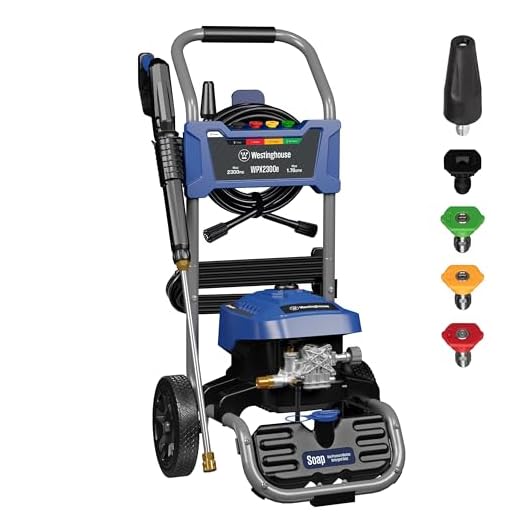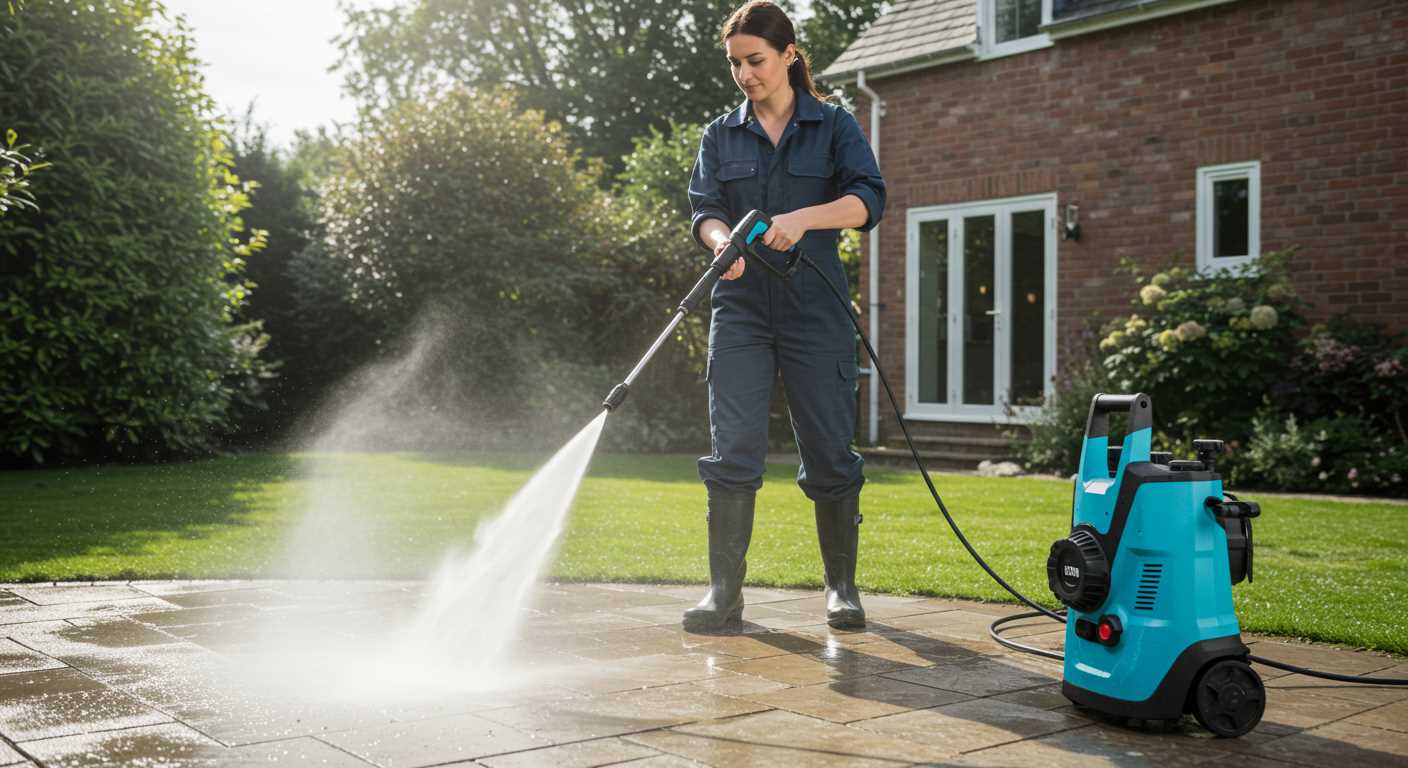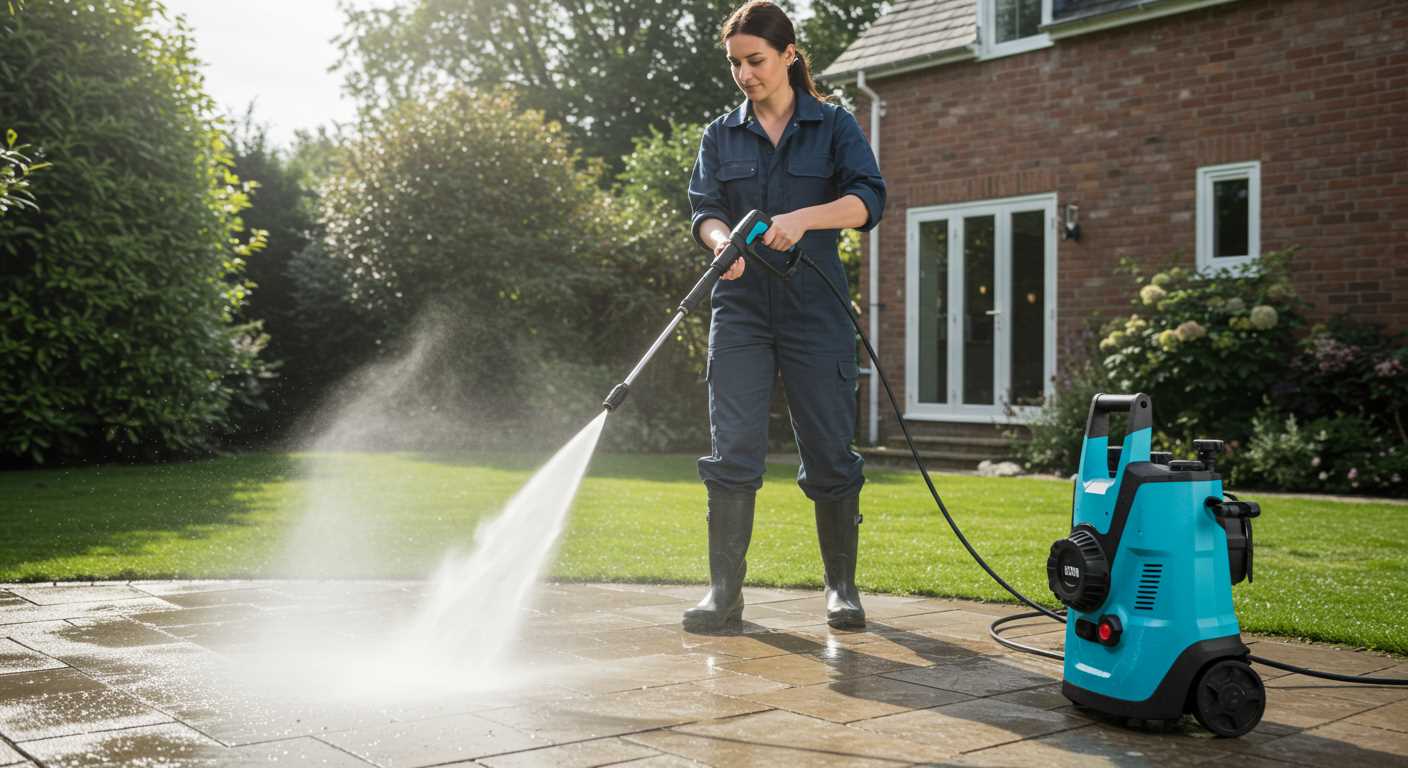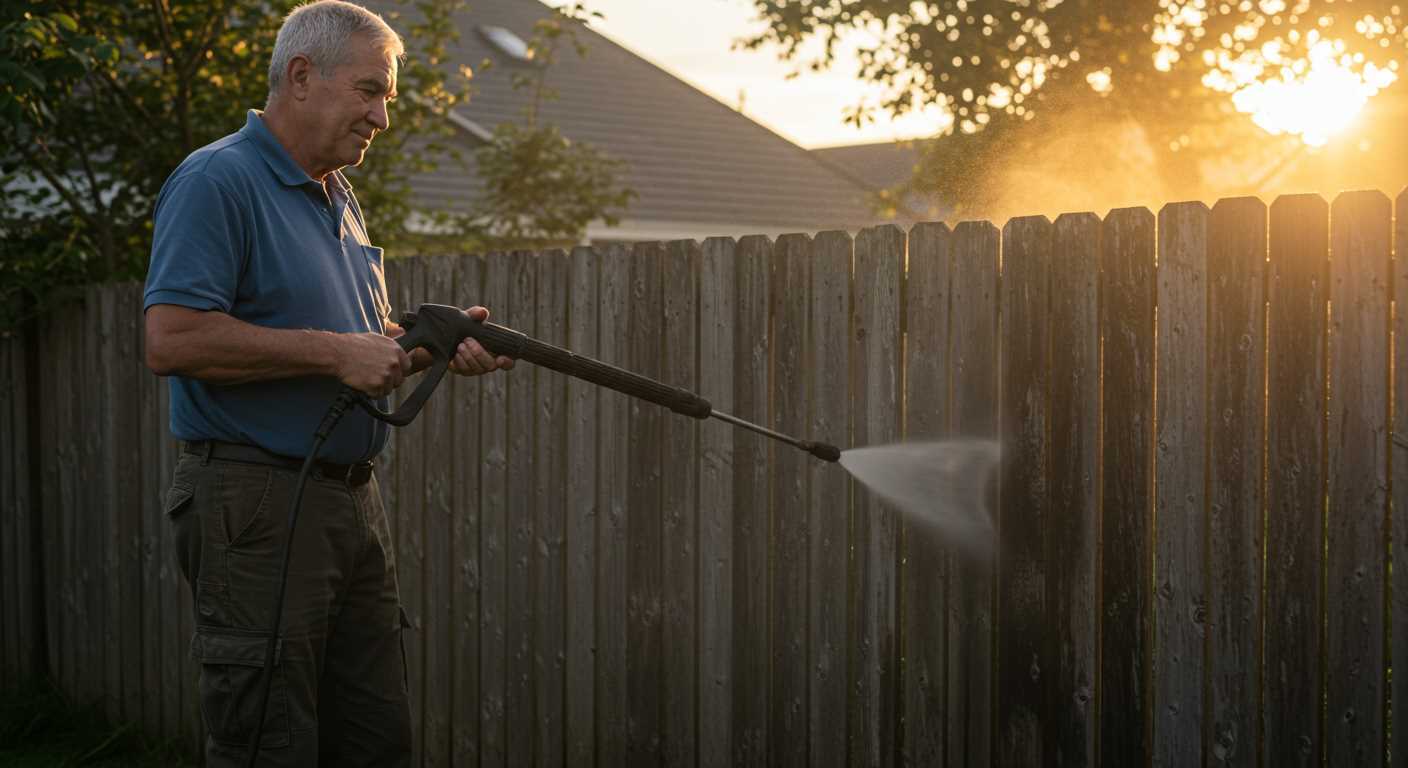




Mixing household cleaning agents with water in a high-powered device is not advisable. These products often contain ingredients that can damage internal components or create excessive foam, leading to malfunctions. Instead, it’s best to opt for specially formulated cleaning solutions designed for such equipment.
In my years as a consultant for a cleaning equipment company, I witnessed numerous cases where users attempted to take shortcuts with standard cleaners. One memorable incident involved a homeowner who used a generic dish cleaner. Within minutes, the machine began to sputter and eventually stopped functioning altogether. It turned out that the foam buildup clogged the system, necessitating costly repairs.
For optimal results, select a cleaner specifically created for high-pressure machines. These products not only enhance cleaning efficiency but also protect the unit from potential damage. Always consult the manufacturer’s guidelines for recommendations on compatible cleaning solutions. In my experience, adhering to these recommendations saves time and ensures your equipment runs smoothly for years to come.
Using Liquid Detergents in High-Pressure Cleaners
Opting for liquid cleaners specifically designed for high-pressure machines is the best route. Regular household cleaners, like those intended for dishwashing, may lead to complications.
Why Avoid Regular Household Cleaners?
- Potential for Residue: Household detergents can leave a film, which may attract dirt post-cleaning.
- Foam Build-Up: Some formulas create excessive foam, risking damage to internal components.
- Warranty Concerns: Utilizing non-approved substances can void manufacturer warranties.
Choosing Appropriate Cleaning Solutions
When selecting a cleaner, look for those specifically formulated for your equipment type. These products are designed to work effectively with the water pressure and temperature, ensuring optimal performance without risking damage.
For a guide on suitable options, check out the best pressure washer soap and detergent. This resource can help you find the right solution for your cleaning tasks.
Understanding the Composition of Dishwashing Liquid
Choosing a cleaning agent requires knowledge of its components. Most cleaning liquids contain surfactants, which lower the surface tension of water, enhancing its ability to penetrate and lift grime. These surfactants work by breaking down oils and fats, allowing them to be easily rinsed away.
Common ingredients include sodium lauryl sulfate and sodium laureth sulfate, both effective at cutting through grease. Additionally, many formulations incorporate enzymes that target specific stains, such as proteins or starches, breaking them down for easier removal. Fragrances and colourants are often added, though they serve primarily for consumer appeal rather than cleaning efficacy.
While these ingredients excel in household applications, their use in cleaning machinery requires caution. High concentrations of surfactants can create excessive foam, which may lead to operational issues or damage equipment. Always refer to the manufacturer’s guidelines before introducing any cleaning formulations, ensuring compatibility and preventing potential malfunctions.
In my experience, using a diluted solution can mitigate risks while still achieving satisfactory results. Testing a small amount in a controlled environment can help gauge performance without compromising equipment integrity. Knowledge of chemical interactions can save time and resources in the long run.
Compatibility of Dish Soap with Pressure Washer Components
Using common cleansing agents can lead to unforeseen complications. Many components within these machines, such as seals, O-rings, and pumps, are crafted from materials specifically designed to withstand certain chemical compositions. The introduction of standard household cleaning products may compromise these materials, resulting in wear and potential leaks.
In my experience, I have encountered various brands and formulations of cleaning solutions, each affecting equipment differently. Some may contain additives that erode rubber and plastic parts. A few years ago, during a routine demonstration, a colleague used a popular brand of all-purpose cleaner. Within days, we observed significant deterioration of the seals in his unit, requiring costly replacements.
It’s crucial to check the manufacturer’s guidelines for compatibility before experimenting with any cleaning solution. Many brands offer specific detergents designed for their models, ensuring both performance and longevity. In my testing, I noticed that using recommended products not only maintained the integrity of components but also enhanced cleaning efficiency.
| Component | Potential Impact |
|---|---|
| Seals and O-rings | Degradation and leaks |
| Pumps | Reduced performance and failure |
| Hoses | Cracking and brittleness |
| Spray Nozzles | Clogging and damage |
Always prioritise products specifically formulated for high-pressure cleaning applications. This not only protects your equipment but also ensures optimal cleaning results. I’ve seen firsthand the difference that the right cleaning agents can make, both in performance and equipment lifespan. Stick to what’s recommended, and your machine will thank you for it.
Potential Risks of Using Dish Soap in a Pressure Washer
Using household cleaning liquids in high-pressure cleaning systems can lead to several issues. One significant risk is the potential for foaming, which can obstruct the internal components. I’ve seen machines struggle under excessive foam, causing inefficiencies and, in some cases, permanent damage to seals and pumps.
Another concern is the residue left behind after application. While some might think a cleaner surface is guaranteed, the remnants of cleaning agents can attract dirt over time, leading to increased maintenance efforts. I recall a customer who experienced this firsthand; after using a common kitchen cleaner, their surfaces looked great initially, but within weeks, they noticed a sticky film accumulating.
Compatibility is key. The chemical composition of certain cleaning agents can deteriorate rubber and plastic components in the machinery, leading to leaks or malfunctions. I once had a colleague who neglected this warning, resulting in costly repairs due to damaged seals. It’s crucial to stick with recommended formulations to avoid such pitfalls.
Environmental concerns shouldn’t be overlooked either. Many standard household cleaners can have adverse effects on the surrounding ecosystem if they enter waterways. I’ve always advocated for using products that are biodegradable and safe for the environment, especially if the cleaning job is outdoors.
Lastly, the warranty on your equipment could be at risk. Many manufacturers explicitly state in their guidelines what substances are safe for use. Ignoring these guidelines can void your warranty, leaving you liable for any repairs or replacements. I had a customer who learned this the hard way after using an unapproved cleaner; they were left with a hefty repair bill and no recourse under warranty.
Recommended Alternatives to Dish Soap for Pressure Washing
Opt for specially formulated cleaning agents designed for high-powered cleaning machines. These products ensure optimal performance while protecting the internal components of the equipment.
- Car Wash Shampoo: This option is designed to lift dirt and grime without harming vehicle surfaces. It’s gentle yet effective for outdoor surfaces.
- Household Cleaners: Look for concentrated formulas that can be diluted. They tackle mildew and algae effectively on siding and patios.
- Biodegradable Cleaners: Eco-friendly choices are available that break down naturally and are safe for plants and animals. They work well on driveways and decks.
- Concrete Cleaners: These are specifically designed to penetrate and break down tough stains on concrete surfaces. Ideal for driveways and garage floors.
- Deck and Fence Cleaners: Formulated to restore the appearance of wooden surfaces, these cleaners help in removing dirt without damaging the wood.
During my years in the industry, I’ve encountered numerous clients who regretted using unsuitable substances. A colleague once used a common household cleaner, thinking it would save time. Instead, it led to clogged filters and costly repairs. Investing in the right cleaning solution not only preserves the machinery but also enhances cleaning results.
Always follow the manufacturer’s guidelines to ensure compatibility and prevent any mishaps. Keeping the equipment in prime condition will extend its lifespan and provide better results with each use.
How to Properly Dilute Dish Soap for Pressure Washing
For optimal results, a dilution ratio of 1:10 is advisable. This means one part cleaning agent mixed with ten parts water. Using warm water can enhance mixing and improve cleaning efficacy, especially for greasy residues. In my experience, blending the solution in a separate container before transferring it to the machine ensures a consistent mixture and prevents clogging.
Steps for Dilution
First, gather a clean, empty container for mixing. Measure the desired amount of the cleaning agent. I often use a measuring cup for precision. Next, add the measured cleaning solution to the container and then gradually incorporate water to achieve the desired ratio. Stir gently to avoid excessive foam. Once mixed, transfer the solution into the machine’s detergent tank, ensuring not to overfill.
Testing the Mixture
.jpg)
Before applying it to the surface, I recommend testing the diluted mixture on a small, inconspicuous area. This allows you to gauge its effectiveness and observe any potential reactions with the surface. If the results are satisfactory, proceed with washing the larger area, maintaining an appropriate distance to prevent damage.
Impact of Dish Soap on Cleaning Performance
Using common household cleaners can seem appealing for enhancing cleaning outcomes. However, in my experience, the addition of a certain liquid can lead to mixed results. While it may assist with breaking down grime, it also risks diminishing the overall cleaning efficiency of your machine.
In practice, I’ve found that these products often create excessive foam. This can obstruct the nozzle and interfere with the delivery of water and cleaning agents. Consequently, users may face reduced pressure and uneven cleaning surfaces. From testing different formulations, it became evident that those with high surfactant content can leave residues that are difficult to rinse away, potentially leading to streaks or film on surfaces.
Interestingly, the performance varies based on the concentration used. Lower concentrations tended to yield better results, providing just enough cleaning power without overwhelming the system. However, achieving the right balance can be tricky. Too much can result in the aforementioned foaming issues, while too little may not effectively tackle tougher stains.
On several occasions, I observed that surfaces treated with this liquid required more rinsing. This extra step can be time-consuming, especially for larger areas. Instead of achieving a quick clean, users may find themselves spending additional time just to remove residues.
In summary, while it may seem like a simple solution, the impact of adding this household cleaner can complicate the cleaning process. Exploring purpose-built alternatives designed for use with cleaning equipment could provide a more effective and hassle-free experience.
Steps to Safely Use Soap in a Pressure Washer
First, always check the manufacturer’s guidelines for your equipment before adding any cleaning agents. If permitted, use a dedicated soap injector or detergent system designed for high-pressure cleaning.
Start with a proper dilution ratio. Typically, a ratio of 1:10 is effective, but this can vary based on the product. Mix the soap with water in a separate container, ensuring it’s well blended before transferring it to the machine’s soap tank.
Next, select the right nozzle. A low-pressure nozzle (usually around 25 degrees) is ideal for applying soap. This prevents damage to surfaces while ensuring an even application.
Begin application from the bottom up, working in sections. This technique allows the cleaning solution to cling to vertical surfaces, enhancing its effectiveness. Allow the mixture to dwell for a few minutes, but don’t let it dry out.
When rinsing, switch to a high-pressure nozzle to remove the soap. Maintain a safe distance from surfaces to avoid any potential damage. Always test on a small area first, especially on delicate surfaces.
To maintain your equipment, rinse the soap tank and lines with clean water after use. This prevents any build-up that can affect performance. Regular maintenance ensures longevity, especially if using a corded electric pressure washer.
Finally, store any leftover solution properly, and label it for future use. Having the correct mixture ready can save time on your next project.
Cleaning and Maintenance After Using Soap in a Pressure Washer
After using a cleaning agent in a high-powered cleaning device, immediate and thorough maintenance is crucial. Start by rinsing the system with clean water. This step helps eliminate any residues that could potentially harm internal components. I recall a time when I neglected this step and faced clogged nozzles the next time I used my equipment. A simple rinse would have saved me a lot of hassle.
Flushing the System
To effectively flush, connect the water source and let it run through the unit without any additional substances for several minutes. This process ensures that all soap remnants are washed away, preventing future complications. I often recommend performing this task even if using a mild formulation. Remember, it’s about maintaining the longevity of your gear.
Inspecting and Storing the Equipment
After rinsing, inspect hoses and fittings for any signs of wear or damage. Pay attention to seals and connections, as soap can sometimes lead to degradation. If you notice any issues, address them promptly to avoid costly repairs later. Once everything looks good, store the machine in a dry, cool place, ensuring all parts are secure. In my experience, proper storage is just as important as the cleaning process itself; it can significantly extend the life of your equipment.
Regular maintenance checks following the use of any cleaning agent will ensure optimal performance and reliability. Make it a habit, and your equipment will thank you with years of dependable service.




.jpg)
.jpg)


